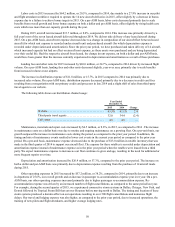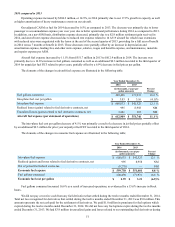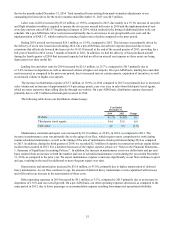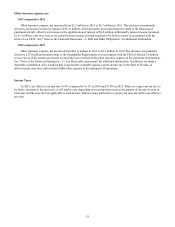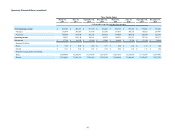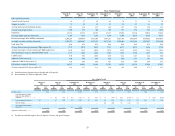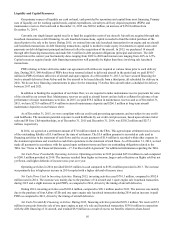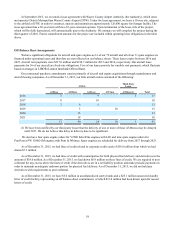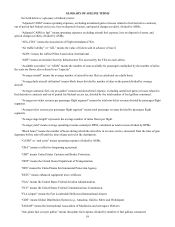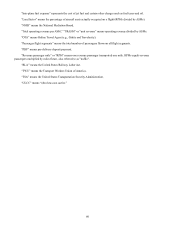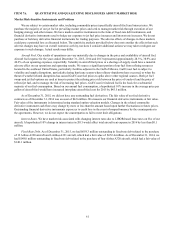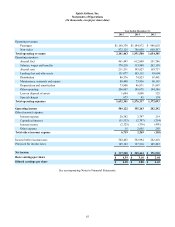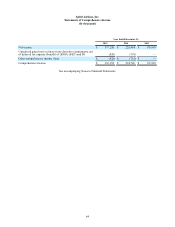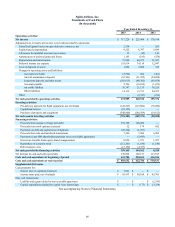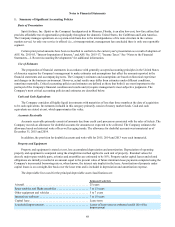Spirit Airlines 2015 Annual Report Download - page 59
Download and view the complete annual report
Please find page 59 of the 2015 Spirit Airlines annual report below. You can navigate through the pages in the report by either clicking on the pages listed below, or by using the keyword search tool below to find specific information within the annual report.59
GLOSSARY OF AIRLINE TERMS
Set forth below is a glossary of industry terms:
“Adjusted CASM” means operating expenses, excluding unrealized gains or losses related to fuel derivative contracts,
out of period fuel federal excise tax, loss on disposal of assets, and special charges (credits), divided by ASMs.
“Adjusted CASM ex fuel” means operating expenses excluding aircraft fuel expense, loss on disposal of assets, and
special charges (credits), divided by ASMs.
“AFA-CWA” means the Association of Flight Attendants-CWA.
“Air traffic liability” or “ATL” means the value of tickets sold in advance of travel.
“ALPA” means the Airline Pilots Association, International.
“ASIF” means an Aviation Security Infrastructure Fee assessed by the TSA on each airline.
“Available seat miles” or “ASMs” means the number of seats available for passengers multiplied by the number of miles
the seats are flown, also referred to as "capacity".
“Average aircraft” means the average number of aircraft in our fleet as calculated on a daily basis.
“Average daily aircraft utilization” means block hours divided by number of days in the period divided by average
aircraft.
“Average economic fuel cost per gallon” means total aircraft fuel expense, excluding unrealized gains or losses related to
fuel derivative contracts and out of period fuel federal excise tax, divided by the total number of fuel gallons consumed.
“Average non-ticket revenue per passenger flight segment” means the total non-ticket revenue divided by passenger flight
segments.
“Average ticket revenue per passenger flight segment” means total passenger revenue divided by passenger flight
segments.
“Average stage length” represents the average number of miles flown per flight.
“Average yield” means average operating revenue earned per RPM, calculated as total revenue divided by RPMs.
“Block hours” means the number of hours during which the aircraft is in revenue service, measured from the time of gate
departure before take-off until the time of gate arrival at the destination.
“CASM” or “unit costs” means operating expenses divided by ASMs.
“CBA” means a collective bargaining agreement.
“CBP” means United States Customs and Border Protection.
“DOT” means the United States Department of Transportation.
“EPA” means the United States Environmental Protection Agency.
"EETC" means enhanced equipment trust certificate.
“FAA” means the United States Federal Aviation Administration.
“FCC” means the United States Federal Communications Commission.
"FLL Airport" means the Fort Lauderdale Hollywood International Airport.
“GDS” means Global Distribution System (e.g., Amadeus, Galileo, Sabre and Worldspan).
"IAMAW" means the International Association of Machinists and Aerospace Workers.
“Into-plane fuel cost per gallon” means into-plane fuel expense divided by number of fuel gallons consumed.



